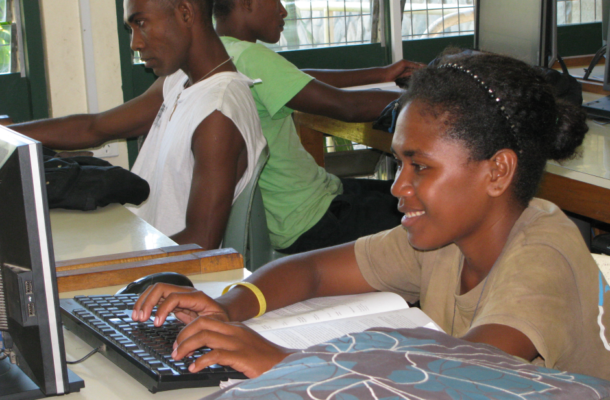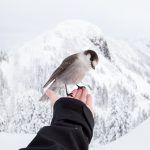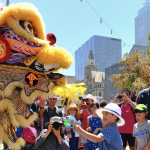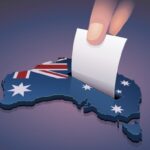Australia to fund internet cable to PNG and Solomons

Federal government funding for a new undersea cable linking Australia to Papua New Guinea and the Solomon Islands has been announced. While it will encourage digital connectivity in the Pacific, aid groups are concerned that drawing funds from the current $1.1 billion aid budget will harm educational, health and social programmes.
Australia is concerned that high profile Chinese investment in landmark infrastructure projects is eroding Australian influence in the region, despite Australia’s hefty and long standing contribution to regional development. The cable project could therefore herald a new trend of Australian funding for major infrastructure projects in the region to counter the Chinese Government’s promises of convention centres, new roads and wharves, which are often paid for by concessional loans.
Canberra has announced it will foot two thirds of the bill for the new undersea cable, with PNG and the Solomons funding the remainder of the likely $200 million required. A deal on funding arrangements between the three countries should be announced later in May, Sydney, Townsville or the Sunshine Coast are being considered as the Australian link for the cable.
Australia intervened last year after the Solomon Islands Government signed a deal with Chinese communications giant Huawei to build an underwater cable linking its capital, Honiara to Sydney. That announcement raised concerns from security analysts about growing Chinese influence in the region and the prospect of a state-owned Chinese company gaining access to Australia’s internet infrastructure. The Chinese government and other Chinese actors have been linked to systematic cyber-espionage attempts aimed at western governments and firms.
The Minister for International Development and the Pacific, Concetta Fierravanti-Wells, told ABC’s Pacific Beat the cable project’s full costings had not been completed, although similar projects have cost $200 million, but confirmed the bulk of Australia’s contribution will be drawn from existing aid money.
“We will provide the majority funding for this cable, there will be appropriate financial contribution from PNG and the Solomon Islands governments,” she said. “The bulk of our funding for this project will be from our Overseas Development Assistance program.”
Australia’s Overseas Development Assistance (ODA) totaled $3.9 billion this financial year, a quarter of which went to the Pacific. Senator Fierravanti-Wells has previously confirmed to Pacific Beat that this year’s aid budget will grow slightly to $4 billion.
“The stability and prosperity of the Pacific is one of our highest foreign policy priorities and this is a strategic investment in our region,” she said. “It’s very much in Australia’s interest to have a more connected, a better connected Papua New Guinea and Solomon Islands, with a more development-friendly IT infrastructure. “[It] is vitally important because … if we enable improved internet access and connectivity, it should in turn, improve long-term economic trajectory of both the countries.”
While Marc Purcell, the chief executive of the Australian Council for International Development (ACFID), agreed the internet cable would be boost the region, he argued the money should be offered in additional to the current aid budget. Last year PNG received $546 million in Australian aid, while Solomon Islands was given $142 million. PNG and the Solomon Islands are expected to own the cable infrastructure and will share the revenue generated from it.
“Deep sea cables can be very useful for the benefit, for development of countries, but the issue is [if it is] new and additional money to resource it, in which case, fine,” he said. “But if it’s at the expense of cutting existing programs in basic health and education for the people of Solomon Islands and PNG, then that would be wrong.”
Jonathon Pryke, the director at the Pacific Islands Program at the Lowy Institute, opposed any funding of the cable from the current bilateral aid programs with PNG and Solomon Islands. “If we take the assumption that it’s around $130 to $150 million, split maybe half and half between Papua New Guinea and Solomon Islands, that’s the equivalent of 50 per cent of our bilateral aid spend in Solomon Islands, and it’s the equivalent of about 10 per cent of our aid spend in Papua New Guinea,” he said.
“The aid dollar is already stretched and allocated across a whole number of sectors and so that is a substantial amount of money, and considering we expect the project to be completed by November 2019, it’s not like we can stretch it out over five or 10 years to reduce the burden on these countries.”
The majority of that funding has been spent on what the Australian Government calls “effective governance”, which pays for programs focused on electoral reform, combatting corruption and improving access to justice. Significantly less is spent on infrastructure in both countries; making up about a fifth of both country’s Australian aid budgets.
But Mr Purcell stressed the idea that this will change in future budgets. “I think we can speculate we’re going to see more of this kind of infrastructure aid in the future in response to the much reported concerns about China’s presence in the Pacific and its use of its aid program and concessional loans for hard infrastructure.”
Stephen Howes, director at ANU’s Development Policy Centre and ex-chief economist of the government’s former aid program, urged caution until the precise details were announced. “We’ll have to wait for the budget to see where the money is coming from and is it coming from other projects in PNG and the Solomon Islands? Or is it coming from other parts of the aid program?”
“While those are legitimate questions, it’s also the case that this is potentially a very high return project, and a lot of time the aid program in the Pacific struggles to find high return projects. I think you can make a case this is potentially a good use of aid funding, but it is really going to depend on the structure put around it”.

Open Forum is a policy discussion website examining the social, political, economic, cultural and environmental issues of today. We welcome contributions and invite you to follow us on Twitter, Linkedin, Federated Press and Vivaldi Social. We #StandwithUkraine.












